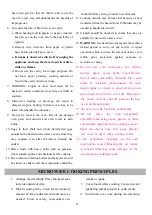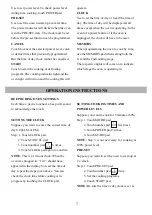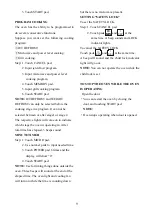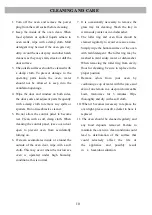
the container and heat the food.
2. Microwave can not penetrate metal, so metal utensils or dishes with metallic trim should not be used.
3. Do not use recycled paper products when microwave cooking, as they may contain small metal
fragments which may cause sparks and/or fires.
5. Narrow strips of aluminum foil may be used to prevent overcooking of exposed areas. But be careful
don’t use too much and keep a distance of 1 inch (2.54cm) between foil and cavity.
The list below is a general guide to help you select the correct utensils.
Cookware
Microwave
Cooking
Grill
Cooking
Combination
Cooking
Heat–Resistant Glass
Yes
Yes
Yes
Non Heat–Resistant Glass
No
No
No
Heat–Resistant Ceramics
Yes
Yes
Yes
Microwave–Safe Plastic Dish
Yes
No
No
Kitchen Paper
Yes
No
No
Metal Tray
No
Yes
No
Metal Rack
No
Yes
No
Aluminum Foil & Foil Containers
No
Yes
No
PART NAMES
①
Door Safety Lock System
②
Oven Window
③
Oven Air Vent
④
Shaft
⑤
Roller Ring
⑥
Glass Tray
⑦
Control Panel
⑧
Heater
⑨
Metal Rack
3
7
9
6
8
4
5
2
1
5
UTENSILS GUIDE
1. The ideal material for a microwave utensil is transparent to microwave, it allows energy to pass through
4. Round /oval dishes rather than square/oblong ones are
recommended,
as food in corners tends to overcook.
and hamburgers. Large items like roasts
must be turned over at least once.
5. Rearrange foods such as meatballs halfway
through cooking both from top to bottom
and from the center of the dish to the
outside.
6.
Always refer to a microwave cookbook for
details. especially if cooking or reheating
food that contains alcohol.
to speed cooking of such foods as chicken
XT-20EG/S





























